Ishi Mak on Photographing Shanghai’s Architectural Heritage
He captures what remains of Shanghai’s vanishing heritage structures, showcasing their beauty and elegance as deserved.
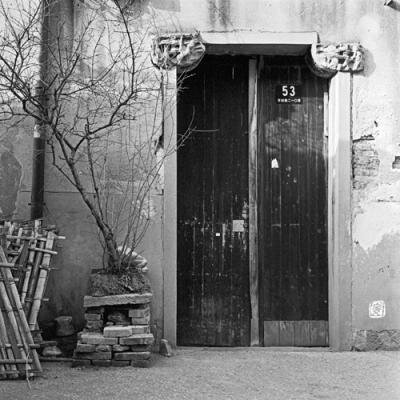
Ishi Mak (麦宇斯) is a dedicated photographer of Shanghai’s architectural heritage with a style reminiscent of Japanese minimalism. Widely known on Flickr as シャッターBUG, he captures what remains of Shanghai’s vanishing heritage structures, showcasing their beauty and elegance as deserved. Ishi’s attention to the photographic process and reverence for his subject detail are reflected in his tightly edited and timeless work.
Websites: ishimak.com and flickr
SA: Tell us a little about what your photography focuses on in Shanghai. (i.e. can you address why only architecture and design, no humans) Why is it a specific interest of yours?
IM: The series in question, “fragments of Old Shanghai” are the visual confluence of my interests in history, architecture and photography. By employing compositions with only architecture and design (without the presence of socioeconomic elements i.e people), I hope to draw attention to new perspectives of seeing architectural elements that together and form the architectural style of their heritage.
As a singular entity, these architectural elements illustrate their connection with history and culture. On their own, every piece has its story and purpose. When they disappear, a part of local history is lost.
It’s hard not to feel the residual energy of history in places that I venture to. Hence, the notion of lingering shadows comes to mind as I work on “fragments of Old Shanghai.” It’s impossible for shadows to linger after the object is gone forever. The only way for shadows to linger so to speak is via photography. We document the moment that was.
SA: Your black and white photography reflects a very minimalist and austere style, and you mentioned how light and shadows are key themes for you. Why is it about this particular aesthetic that appeals to you?
IM: Yes, I do subscribe to a minimalist approach when composing a frame; I will quote Hans Hofmann to reflect my vision and thoughts on this: “eliminate the unnecessary so that the necessary may speak.”
When I think of light and shadows, I think of visual poetry. Why it is so appealing to me? It’s because it defines our existence.
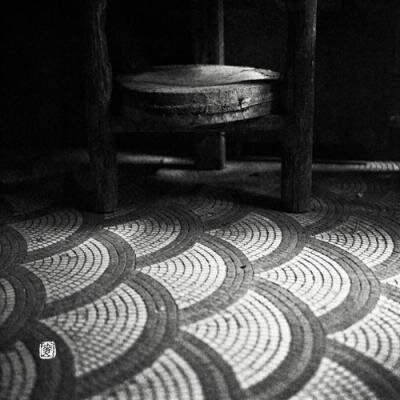
SA: I notice you have an expressed love for Old China through the intricate details of houses you photograph, such as the carvings in doors, ceiling beams, boundary stones etc. Do you have a particular period of architecture that you favor?
IM: I am very fond of architecture from the Tang and Song dynasty. Unfortunately, I believe there is not an authentic piece of it in Shanghai unless you venture south to Songjiang.
In any case, I am no expert when it comes to traditional Chinese architecture. Documenting old Shanghai is a learning process of rediscovering traditional Chinese architecture and it has been a very humbling experience.
SA: It makes a lot of sense, given your style, that you shoot with film. I love how you include detailed notes on your camera, film and settings you shoot in. Share with us some details of your equipment and what you love about them.
IM: At the moment, I work only with medium format film cameras but hopefully soon, large format as well. In my dry cabinet, I have an assortment of Hasselblad, Bronica, Mamiya and Rolleiflex. But the clear favorite is the Rolleiflex 3.5E Xenotar as it’s light and very portable. Xenotar lenses are sharp and excellent from wide open onward.
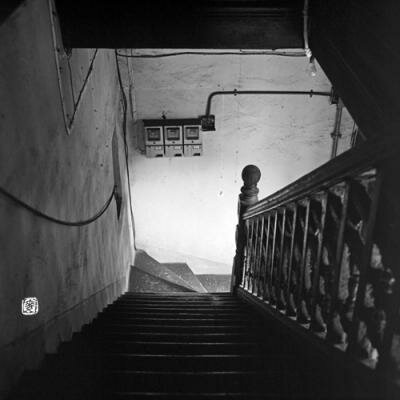
SA: You mentioned that photography was a way to block out the noise in Shanghai. You also have perfectionist tendencies in your approach. For example, you can take hours to compose a frame, and would spend a minimum of 6 hours shooting. Can you take us through the process of your photography, such as when you head out, what places and details you have in mind?
IM: Four fundamental criteria guided my work on “fragments of Old Shanghai”: the rarity of the subject, quality of architectural elements, light and shadows.
For example, as a general rule, particularly with shikumen entrances, unique designs took precedence over more utilitarian designs; and ordinary newel-post being the least important. In addition, the subject in question has to have a certain personal aesthetic appeal in correlation with light and shadows.
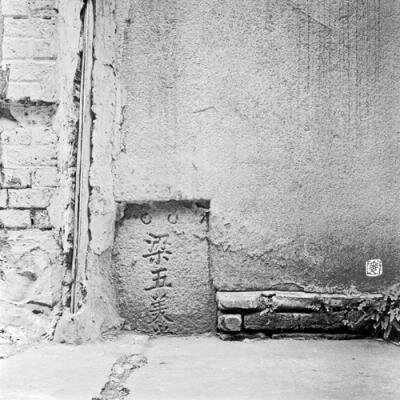
SA: Do you encounter any challenges in the course of your work? People, places?
IM: There are always the occasional obstructions, but that’s the beauty of it.
SA: Share with us a favorite location of yours.
IM: I have been documenting the former old walled city for the past year and the most fulfilling experience for me was in Shu Yin Lou (书隐楼). However, I am now rediscovering portions of Zhabei district just north of the Suzhou creek. You will be amazed as to how much old heritage architecture you can still discover within.
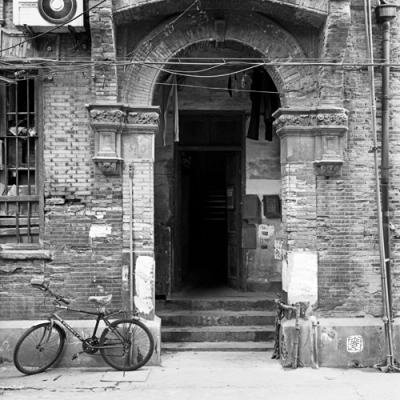
SA: You develop the film yourself, tell us about your preference for the process.
IM: After working with various film development techniques over the years, I have come to believe that stand development is best for my art. The principal theme of my art revolves around shadow and light. Hence, I require a developing technique that will increase the development of shadows while simultaneously limit the highlights being overblown. This is where stand development comes in.
SA: Are you hopeful about preservation in the city?
IM: With the current rate of urban development commencing at full speed (especially after the Shanghai Expo), I am definitely not very hopeful of heritage preservation in the city.
Sue Anne Tay is the author and photographer of Shanghaistreetstories.com.
This post was first published on Shanghai Street Stories in May 2011.

















